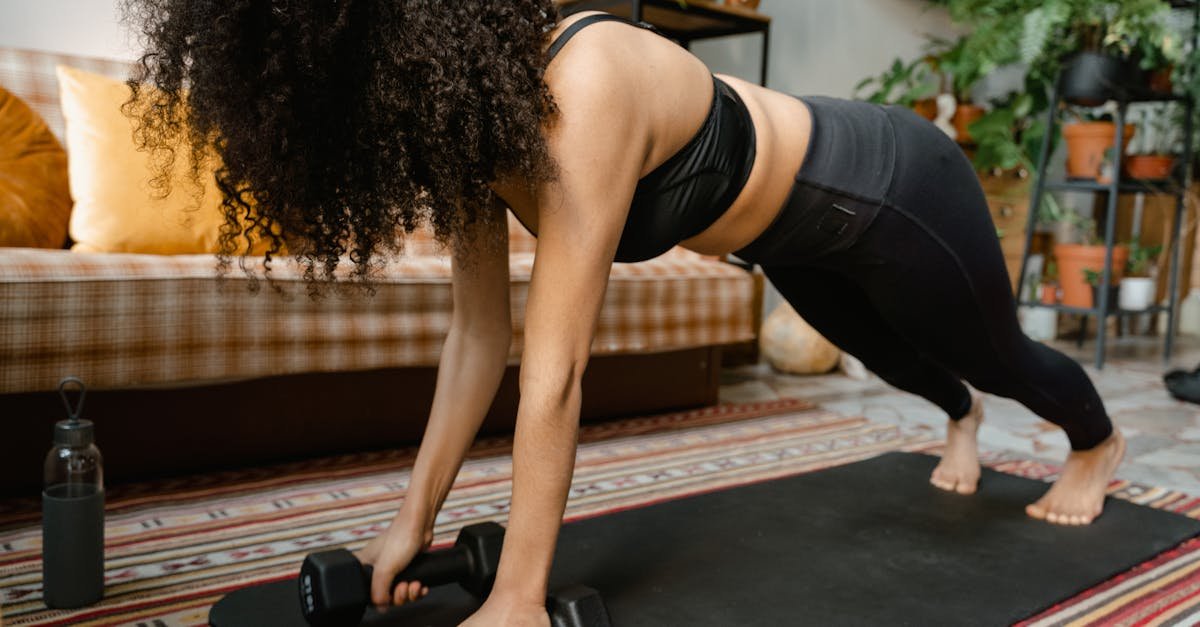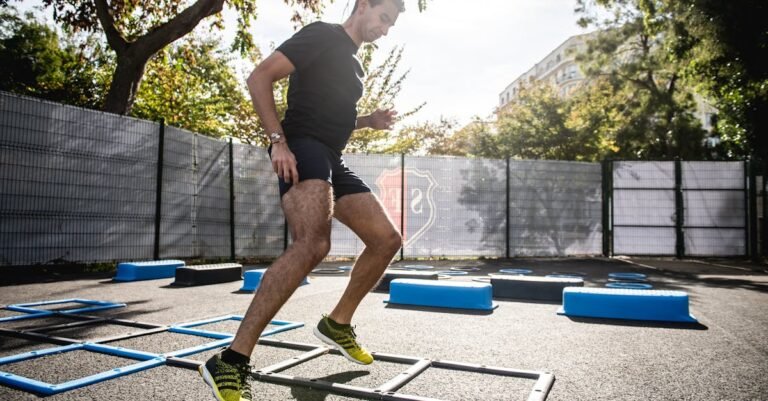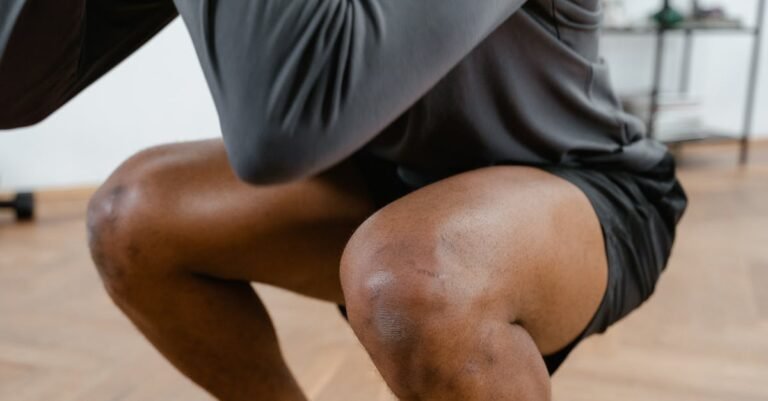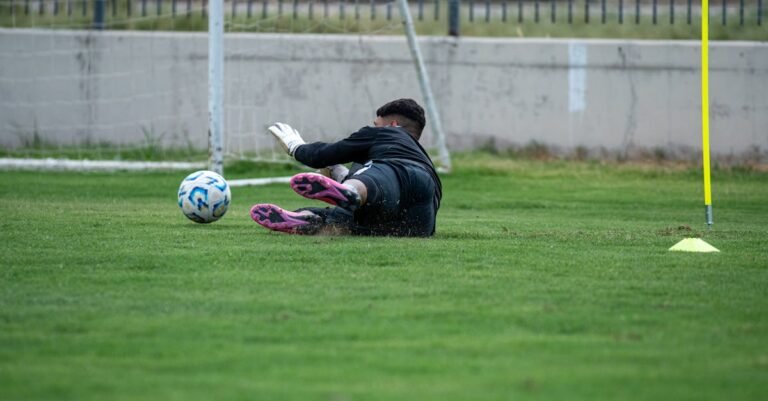- Cardio Workouts You Can Do Anywhere: Your No-Excuse Fitness Guide
- Why Cardio Anywhere is a Game-Changer
- Your Anywhere Cardio Arsenal: No Equipment Needed!
- 1. Jumping Jacks: The Classic Energizer
- 2. High Knees: Marching Towards Fitness
- 3. Butt Kicks: Firing Up the Hamstrings
- 4. Burpees: The Full-Body Blast (Love ’em or Hate ’em!)
- 5. Mountain Climbers: Core and Cardio Combo
- 6. Shadow Boxing: Punch Your Way to Fitness
- 7. Stair Climbing: Using Your Environment
- 8. Jogging or Running in Place: Simple Yet Effective
- Structuring Your Anywhere Cardio Workout
- Making it Stick: Consistency is Key
- Conclusion: Your Fitness Journey, Unbound
- Frequently Asked Questions (FAQs)
Cardio Workouts You Can Do Anywhere: Your No-Excuse Fitness Guide
Let’s be real for a second. Life gets busy, right? Between work, family, social commitments, and just trying to catch your breath, finding time for fitness can feel like trying to solve a Rubik’s cube blindfolded. Gym memberships cost money, commutes eat up precious minutes, and sometimes, you just don’t feel like being around a crowd. Sound familiar? Well, what if I told you that you could get a killer cardio workout, boost your heart health, and torch calories without ever needing fancy equipment or even leaving your living room (or hotel room, or park)? Welcome to the amazing world of “anywhere cardio”!
This isn’t about complex routines or needing a personal trainer on speed dial. It’s about using the most incredible piece of fitness equipment you already own: your body. We’re talking simple, effective exercises that get your heart pumping, your blood flowing, and those feel-good endorphins surging, no matter where you find yourself. Ready to ditch the excuses and embrace fitness freedom? Let’s dive in!
Why Cardio Anywhere is a Game-Changer
Okay, so why is this whole “cardio anywhere” concept such a big deal? It boils down to accessibility and consistency. Think about the usual hurdles to working out. This approach pretty much obliterates them.
Breaking Down Barriers: Time, Cost, and Location
First off, time. No more factoring in travel time to the gym. Your workout space is wherever you are! Got 15 minutes during your lunch break? Perfect. Waiting for dinner to cook? Squeeze in some high knees. The flexibility is unparalleled. You’re stealing back time, making fitness fit your schedule, not the other way around.
Then there’s cost. Gym memberships, boutique fitness classes, fancy home equipment… it all adds up. Anywhere cardio? The cost is zero, zilch, nada. You don’t need expensive sneakers (though decent ones help!), stylish activewear (your PJs work just fine!), or any gadgets. It’s fitness democratized, available to everyone regardless of budget.
And finally, location. This is the magic key. Small apartment? No problem. Hotel room while traveling? Easy peasy. Local park? Fantastic! Backyard? You bet. The world literally becomes your gym. This eliminates the “I can’t work out because I’m not home/near my gym” excuse forever. It empowers you to stay active consistently, which is the secret sauce to seeing real results.
The Undeniable Benefits of Regular Cardio
Beyond the convenience, let’s not forget why cardio is so darn important. It’s not just about looking good (though that’s a nice perk!); it’s fundamental to your overall health and well-being.
Heart Health Hero
Cardiovascular exercise is, unsurprisingly, brilliant for your cardiovascular system. Think of your heart as a muscle. Just like lifting weights strengthens your biceps, cardio strengthens your heart. Regular cardio helps lower blood pressure, improve cholesterol levels (boosting the good HDL, lowering the bad LDL), reduce the risk of heart disease, stroke, and other chronic conditions. It makes your heart more efficient at pumping blood, delivering vital oxygen throughout your body. It’s like giving your internal engine a top-notch tune-up.
Mood Booster Magic
Feeling stressed, anxious, or just a bit blah? Cardio to the rescue! Exercise triggers the release of endorphins, those wonderful neurochemicals often referred to as “feel-good” hormones. They act as natural mood lifters and pain relievers. Ever heard of a “runner’s high”? You don’t need to run a marathon to experience it. Even a moderate session of jumping jacks or shadow boxing can leave you feeling more positive, less stressed, and mentally clearer. It’s like a natural antidepressant, without the side effects!
Weight Management Ally
Cardio burns calories, plain and simple. When you engage in activities that elevate your heart rate, your body taps into its energy stores (including fat) to fuel the movement. Consistent cardio, combined with a balanced diet, is a cornerstone of effective weight management. It helps create a calorie deficit needed for weight loss and plays a crucial role in maintaining a healthy weight long-term. Plus, building cardiovascular fitness often makes you feel more energetic overall, potentially leading to more activity throughout your day.
Your Anywhere Cardio Arsenal: No Equipment Needed!
Alright, enough talk, let’s get moving! Here’s a lineup of fantastic, equipment-free cardio exercises you can do virtually anywhere. Remember to focus on form over speed, especially when you’re starting out.
1. Jumping Jacks: The Classic Energizer
Ah, jumping jacks. Takes you right back to PE class, doesn’t it? But don’t underestimate this classic move. It’s a full-body exercise that elevates your heart rate quickly and works multiple muscle groups.
How to Do It Right
Start standing with your feet together and arms at your sides. Jump your feet out wider than shoulder-width apart while simultaneously raising your arms overhead. Try to touch your hands (or get close) above your head. Immediately jump back to the starting position, bringing your feet together and arms back to your sides. Keep a slight bend in your knees throughout to absorb the impact. Maintain a steady, rhythmic pace. Breathe consistently!
Making it Your Own (Variations)
Need to modify? Try step jacks: instead of jumping, step one foot out to the side while raising your arms, then return to the start and repeat on the other side. Want more intensity? Try star jumps (exploding outwards like a star) or squat jacks (landing in a squat position each time you jump out).
2. High Knees: Marching Towards Fitness
High knees are like running in place but with an exaggerated knee lift. They are fantastic for getting your heart rate up fast and engaging your core and hip flexors.
Perfecting the Form
Stand tall with your feet hip-width apart, core engaged. Drive one knee up towards your chest, aiming for at least hip height (or as high as comfortable). Simultaneously, pump the opposite arm forward (like you’re sprinting). Quickly switch legs, bringing the other knee up while the first leg returns to the ground. Land softly on the balls of your feet. Keep your chest up and avoid leaning back too much.
Intensity Tweaks
Control the intensity by adjusting your speed. Go faster for a bigger cardio challenge. You can also focus on lifting the knees higher to increase muscle engagement. For a lower-impact version, perform high-knee marches without the jump, focusing on deliberate knee lifts.
3. Butt Kicks: Firing Up the Hamstrings
The opposite motion of high knees, butt kicks focus more on the back of the legs (hamstrings and glutes) while still providing a great cardio boost.
Technique Tips
Stand tall, feet hip-width apart. Start jogging lightly in place. As you jog, actively bend one knee and kick your heel back towards your glutes. Aim to actually tap (or get close to) your butt with your heel. Alternate legs rapidly. Keep your knees pointing downwards rather than letting them flare out. Engage your hamstrings to pull the heel back.
Feel the Burn
Focus on the contraction in your hamstrings with each kick. Like high knees, you can increase intensity by increasing speed. Pump your arms naturally as you would when jogging. This isn’t just flailing; it’s controlled movement designed to warm up the hamstrings and get the heart pumping.
4. Burpees: The Full-Body Blast (Love ’em or Hate ’em!)
Okay, let’s address the elephant in the room: burpees. They have a reputation for being tough, and honestly? They are! But they are also incredibly effective, working almost every major muscle group and skyrocketing your heart rate.
Step-by-Step Breakdown
Start standing. Squat down and place your hands on the floor in front of you, just outside your feet. Jump your feet back into a plank position (your body should form a straight line from head to heels). Optional: Perform a push-up. Jump your feet back towards your hands, landing just outside them. Explosively jump straight up, reaching your arms overhead. Land softly and immediately go into the next rep.
Scaling for Success
Burpees can be intimidating, but they are highly modifiable. Beginner version: Skip the jump back and step your feet back into plank one at a time. Skip the push-up. Skip the final jump up, simply standing tall. Intermediate: Add the push-up or the final jump, but not both. Advanced: Do the full burpee with speed and power. The key is finding a version you can perform with good form.
5. Mountain Climbers: Core and Cardio Combo
Mountain climbers are like doing high knees from a plank position. They are brilliant for building core strength and stability while simultaneously providing a fantastic cardio challenge.
Executing the Climb
Start in a high plank position: hands directly under shoulders, core tight, back flat (no sagging hips or piking!). Drive one knee towards your chest, keeping your body stable. Quickly switch legs, bringing the other knee forward as the first leg returns to the starting plank position. It’s like running horizontally.
Pace Yourself
You can perform mountain climbers slowly and deliberately, focusing on core control, or speed them up for a more intense cardio effect. Ensure your hips don’t bounce up and down too much; keep that core braced! Breathe steadily throughout the movement.
6. Shadow Boxing: Punch Your Way to Fitness
Unleash your inner Rocky! Shadow boxing is a fantastic, low-impact cardio option that also engages your upper body, core, and improves coordination. Plus, it’s strangely satisfying.
Getting Started
Adopt a boxer’s stance: feet shoulder-width apart, one slightly in front of the other (if you’re right-handed, left foot forward, and vice versa), knees slightly bent. Keep your hands up, protecting your face (fists near your chin/cheeks, elbows tucked in). Start throwing basic punches: jabs (quick straight punch with the lead hand), crosses (straight punch with the rear hand, rotating your torso), hooks (semi-circular punch aimed at the side), and uppercuts (upward punch). Keep your core tight!
Adding Footwork
Don’t just stand still! Move around. Bounce lightly on the balls of your feet. Practice moving forward, backward, and side-to-side while throwing punches. This adds to the cardio challenge and makes it more dynamic. Imagine an opponent and react – slip, bob, weave! You don’t need to be Muhammad Ali; just keep moving and punching with intention.
7. Stair Climbing: Using Your Environment
Got stairs? You’ve got a killer cardio machine! Whether it’s the staircase at home, in your office building, or steps at a local park, stair climbing is a highly effective way to elevate your heart rate and build lower body strength.
Home, Office, or Park
The beauty is its simplicity. Find a flight of stairs. That’s it! Even a single step up can be used for step-ups if a full flight isn’t available. Bleachers at a sports field also work wonders.
Workout Ideas
You can simply walk or run up and down the stairs for a set duration. Try intervals: sprint up, walk down. Take stairs two at a time (carefully!) for increased intensity. You can mix stair climbing with other bodyweight exercises at the top or bottom landing (e.g., climb stairs, do 10 push-ups, climb down, do 15 squats).
8. Jogging or Running in Place: Simple Yet Effective
Sometimes, the simplest movements are incredibly effective. Jogging or running in place is a fundamental cardio exercise you can do absolutely anywhere with minimal space.
Focus on Form
Even though you aren’t traveling forward, maintain good running form. Keep your chest up, core engaged, and pump your arms. Land softly on the balls of your feet to minimize impact. Lift your knees slightly higher than a standard walk. Avoid just shuffling your feet; make it an active movement.
Interval Training Ideas
Jogging in place is perfect for interval training. Try jogging at a moderate pace for 1 minute, then “sprint” in place (moving arms and legs faster, lifting knees higher) for 30 seconds. Repeat this cycle. You can vary the work-to-rest ratios based on your fitness level.
Structuring Your Anywhere Cardio Workout
Okay, you’ve got your arsenal of exercises. Now, how do you put them together into an actual workout? Just doing random jumping jacks here and there is good, but a structured approach yields better results.
Warm-Up Essentials
Never skip the warm-up! Seriously. It prepares your muscles, heart, and lungs for the work ahead, reducing the risk of injury. Spend 5-10 minutes doing light cardio (like marching in place, slow jumping jacks, arm circles) and dynamic stretches (like leg swings, torso twists, cat-cow stretches). Think of it as gently waking your body up.
Choosing Your Exercises
Pick 3-5 exercises from the list above that you enjoy (or at least tolerate!). Variety is good, so mix it up from workout to workout. Consider exercises that work different parts of the body if possible (e.g., jumping jacks, mountain climbers, shadow boxing).
Workout Formats (HIIT, Circuits, Steady-State)
There are several ways to structure the main part of your workout:
- HIIT (High-Intensity Interval Training): This involves short bursts of intense work followed by brief recovery periods. Example: 30 seconds of burpees, 15 seconds rest; 30 seconds high knees, 15 seconds rest. Repeat the cycle for 10-20 minutes. It’s time-efficient and super effective for boosting metabolism.
- Circuits: Perform one set of each chosen exercise back-to-back with minimal rest in between. After completing all exercises (one circuit), take a longer rest (60-90 seconds), then repeat the circuit 2-4 times. Example: 1 minute jumping jacks, 1 minute mountain climbers, 1 minute butt kicks, 1 minute shadow boxing, then rest.
- Steady-State: Choose one or two exercises (like jogging in place or stair climbing) and perform them at a moderate, consistent intensity for a longer duration (20-40 minutes). This is great for building endurance.
Experiment to find what you enjoy most and what fits your schedule.
Cool-Down Must-Dos
Just as important as the warm-up! Don’t just abruptly stop. Spend 5-10 minutes gradually lowering your heart rate with light activity (like walking in place) followed by static stretching. Hold stretches for major muscle groups (quads, hamstrings, chest, back) for 20-30 seconds each. This helps improve flexibility and aids recovery.
Making it Stick: Consistency is Key
Knowing the exercises and how to structure workouts is one thing; actually doing them consistently is another. How do you build this into a lasting habit?
Finding Your Motivation
Why are you doing this? Is it for better health? More energy? Stress relief? Weight management? Keep your “why” front and center. Remind yourself of it when motivation wanes. Track your progress – maybe note how many reps you did, how long you worked out, or simply how you felt afterward. Seeing improvement is a powerful motivator.
Scheduling Your Sessions
Treat your workouts like important appointments. Block out time in your calendar. Whether it’s first thing in the morning, during lunch, or before dinner, find a time that consistently works for you. Even 15-20 minutes regularly is far better than an hour once in a blue moon.
Listening to Your Body
Consistency doesn’t mean pushing through pain. Learn the difference between muscle fatigue and actual pain. If something hurts sharply, stop. Modify exercises as needed. Some days you’ll have more energy than others, and that’s okay. Adjust the intensity or duration based on how you feel. Rest days are crucial for recovery and preventing burnout.
Conclusion: Your Fitness Journey, Unbound
So there you have it. The power to get a fantastic cardio workout is literally within you, anytime, anywhere. No more excuses about time, money, or location. By embracing these simple, equipment-free exercises like jumping jacks, high knees, burpees, and mountain climbers, you unlock a world of fitness freedom. Remember to warm up, choose a workout structure that suits you (HIIT, circuits, or steady-state), and always cool down. Most importantly, find ways to make it consistent. Schedule it, track it, and listen to your body. Your heart, mind, and body will thank you for it. Your fitness journey isn’t confined to four walls; it’s as expansive and limitless as you choose to make it. Now, what are you waiting for? Pick an exercise and get that heart pumping!
Frequently Asked Questions (FAQs)
1. How long should my “anywhere” cardio sessions be?
It really depends on your goals and fitness level! For general health benefits, aim for at least 150 minutes of moderate-intensity cardio per week, which could be broken down into 30-minute sessions 5 days a week, or even shorter 10-15 minute bursts throughout the day. If you’re doing High-Intensity Interval Training (HIIT), sessions can be shorter, around 15-25 minutes, due to the higher intensity.
2. Can I really get a good workout without equipment?
Absolutely! Your body weight provides plenty of resistance. Exercises like burpees, jumping jacks, mountain climbers, and high knees effectively elevate your heart rate, challenge your muscles, and burn calories. The key is intensity and consistency. You might be surprised how challenging a well-structured bodyweight cardio session can be!
3. How often should I do these workouts?
Aim for consistency. For general fitness, 3-5 days per week is a great target. Listen to your body, though. If you’re doing very intense workouts, you might need more recovery days. If your sessions are shorter or less intense, you might be able to do them more frequently. Remember that some activity is always better than none.
4. What if I have joint pain? Are there modifications?
Yes! Many high-impact exercises have lower-impact modifications. For example, instead of jumping jacks, do step jacks. Instead of high-impact high knees, do marches. Instead of jumping burpees, step back and forward and omit the jump. Shadow boxing and stair climbing (walking, not running) can also be lower impact. Always listen to your body and if you have persistent pain, consult a doctor or physical therapist.
5. How do I stay motivated when working out alone at home or while traveling?
Motivation can be tricky! Try putting on upbeat music you love. Set small, achievable goals. Track your progress. Mix up your exercises to keep things interesting. Remind yourself of your “why.” You could even do virtual workouts with friends or find online fitness communities for support. Sometimes, just focusing on how good you feel after the workout is motivation enough!










